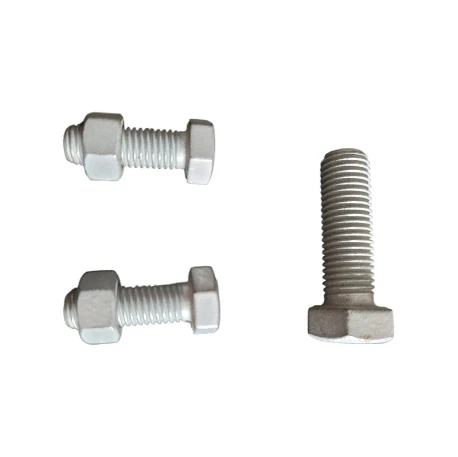

M20 Flange Nut Specifications and Applications for Secure Fastening Solutions
Oct . 18, 2024 17:26 Back to list
M20 Flange Nut Specifications and Applications for Secure Fastening Solutions
Understanding M20 Flange Nuts A Comprehensive Guide
In the world of fasteners, the M20 flange nut stands out as a crucial component used in various applications across multiple industries. The combination of its size, design, and durability makes it an ideal choice for construction, mechanical assemblies, and automotive applications. In this article, we will delve into the specifications, advantages, and applications of M20 flange nuts, providing a comprehensive understanding of their role in ensuring the integrity and efficiency of connections.
What is an M20 Flange Nut?
An M20 flange nut is a type of nut that features a circular flange at one end, which is designed to distribute the load more evenly across the surface of the material being fastened. The M in M20 stands for metric, indicating that this nut conforms to metric standards, while 20 refers to the nominal diameter of the screw thread in millimeters, which is 20 mm. Like other nuts, it is typically paired with a bolt or screw to secure various components together.
Specifications
M20 flange nuts are commonly manufactured from durable materials such as stainless steel, carbon steel, or alloy steel to withstand various environmental conditions. They are often coated with materials like zinc or chrome to enhance their resistance to corrosion and rust, thereby ensuring a longer lifespan. The specification of M20 flange nuts typically includes
- Diameter 20 mm - Thread Pitch The standard thread pitch for M20 nuts is 2.5 mm, though finer pitches may be available. - Strength Grades These nuts are available in different strength grades, such as Grade 8 (high strength) or Grade 12 (superior strength), depending on the application requirements. - Flange Diameter The flange diameter usually exceeds the nut body diameter, providing a larger bearing area.
Advantages of M20 Flange Nuts
1. Load Distribution The flange design allows for better load distribution over the surface of the connected components, reducing the risk of damage due to concentrated stress points.
m20 flange nut

2. Prevention of Loosening Flange nuts are typically designed to reduce the chances of loosening during operation. The flange helps maintain a tighter grip on the fastening assembly, even under vibration or dynamic loads.
3. Versatility M20 flange nuts can be used in various applications, from heavy machinery and automotive assembly to building construction.
4. Ease of Installation Their design allows for easy installation and removal, making them user-friendly and time-efficient during assembly processes.
Applications
The applications of M20 flange nuts are diverse and widespread. Here are some notable areas where they are commonly used
- Construction In building infrastructure, M20 flange nuts are used to secure structural steel beams, ensuring stability and strength in building frameworks. - Automotive Industry M20 flange nuts are frequently used in the manufacturing of vehicles where robust connections are needed to withstand operational stresses. - Machinery and Equipment They play a vital role in machinery assembly, providing secure connections that can cope with heavy loads and continuous use. - Rail and Maritime The design of flange nuts makes them suitable for applications in rail systems and maritime vessels, where they are exposed to harsh environments.
Conclusion
In conclusion, the M20 flange nut is a vital component in various engineering and construction applications. Its unique design offers numerous advantages, including improved load distribution and reduced risk of loosening. As industries continue to evolve, the demand for reliable and efficient fastening systems like the M20 flange nut will undoubtedly remain a priority. Understanding its specifications, benefits, and applications allows engineers and contractors to make informed decisions when selecting the appropriate fasteners for their projects. Whether you're building a skyscraper or assembling a vehicle, the M20 flange nut is sure to play a significant role in ensuring the success of your endeavor.
Latest news
-
High-Strength Hot-Dip Galvanized Bolts-Hebei Longze|Corrosion Resistance&High Strength
NewsJul.30,2025
-
Hot Dip Galvanized Bolts-Hebei Longze|Corrosion Resistance&High Strength
NewsJul.30,2025
-
Hot Dip Galvanized Bolts - Hebei Longze | Corrosion Resistance, High Strength
NewsJul.30,2025
-
High-Strength Hot Dip Galvanized Bolts-Hebei Longze|Corrosion Resistance, Grade 8.8
NewsJul.30,2025
-
Hot Dip Galvanized Bolts-Hebei Longze|Corrosion Resistance,High Strength
NewsJul.29,2025
-
High-Strength Hot Dip Galvanized Bolts - Hebei Longze Metal Products Manufacturing Co., Ltd.|corrosion resistance&high strength
NewsJul.29,2025

